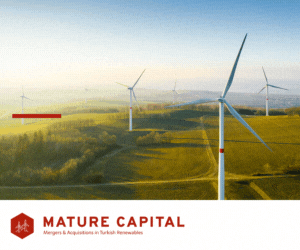Report
Doubling renewables already planned by governments, now tripling within sight

A tripling of renewable capacity by 2030 is within reach if governments take into account the recent growth in renewables. For the first time, a global deal on renewables is on the table at the UN’s COP climate conference this year, as the presidency proposes a global goal to triple renewables capacity this decade.
The International Renewable Energy Agency (IRENA), the International Energy Agency (IEA) and the COP presidency are all aligned that tripling renewables capacity to 11,000 GW by 2030 is required for a 1.5C pathway. Indeed, the IEA states that a tripling of renewables is the single biggest action the world can take by 2030 to keep 1.5C within reach. They show over 90% of the renewable capacity growth would be from solar and wind, with wind capacity rising threefold from 2022 to 2030, and solar capacity fivefold.
This report analyses national renewables targets to see how current plans align with a tripling of renewable capacity by 2030, while noting that a global tripling does not mean that every country is required to achieve a tripling of capacity. Starting close to zero and tripling is not ambitious, whereas some countries are beyond the point that tripling renewables capacity is realistic or needed.
1-Government targets already aim for a doubling of renewable capacity
Government targets already add up to a doubling of renewable capacity by 2030. According to national targets, governments around the world intend to collectively hit an estimated 7.3 TW in 2030, up from 3.4 TW in 2022. More than three-quarters of renewable capacity in 2030, where stated, will be from solar and wind.
2-National targets do not account for the recent acceleration of renewables
Many government targets do not reflect the recent acceleration in renewables deployment worldwide. For example, 12 countries are set to add capacity in 2023 faster than the pace required to meet their 2030 target. In 22 countries the prospective project development pipelines for wind and solar exceed the renewable capacity needed to meet their 2030 targets. The world could achieve its current targets–a doubling of renewables–just by continuing the 500 gigawatts of estimated deployment in 2023 from 2024 to 2030, but all signs point to a more rapid growth curve.
3 -Tripling renewables in sight
To achieve a tripling of renewables by 2030, the world needs to increase renewables deployment by 17% every year, so that it rises from 500 GW in 2023 to about 1.5 TW in 2030. The world already achieved this annual growth rate over the period between 2016 and 2023. The gap between the doubling achieved by national targets and a global tripling is 3.7 TW. Governments need to raise their ambitions and set targets that reflect the true pace of renewable market growth in their respective countries.
4 – Room for higher ambition in many countries
Ten countries have targets that are at or exceed a tripling of their 2022 capacity, including India and Saudi Arabia. There are also 12 countries that have wind and solar generation share targets that exceed the 40% global average to meet net zero, including the United States. However, the report highlights four countries that could step up their targets: Australia, Japan, South Korea and the United Arab Emirates.
The analysis in this report highlights that if countries take stock of their own policy landscape, current annual renewable deployment, and the renewable capacity that is in the pipeline, a more ambitious and yet achievable set of targets for 2030 can be developed. This narrows the gap between where national targets are, where they could be, and what is needed to meet a global tripling goal.
Tripling renewable capacity worldwide is the single biggest action required this decade for the climate. This goal is within sight if governments set targets that reflect the current pace of change and roll out robust new policies to supercharge the building of solar and wind power. Governments have yet to understand the revolution that’s underway with renewables. The targets of today are already outdated and should be updated. As we approach COP28, leaders should be confident in supporting a global goal to triple renewables; it is looking more possible than ever to achieve.
Dr Katye Altieri
Global Electricity Transition Analyst, Ember
-

 Events5 years ago
Events5 years agoCanada and Turkey women working in the renewable energy sector in met
-

 Manufacturers of wind turbines5 years ago
Manufacturers of wind turbines5 years agoGE’s Haliade-X 12 MW prototype to be installed in Rotterdam
-

 Operations and Maintenance6 years ago
Operations and Maintenance6 years agoGENBA is on the rise; another milestone passed by in global existence
-

 Genel8 years ago
Genel8 years agoEWT launches the DW61, It’s most efficient and high energy producing wind turbine
-

 Genel9 years ago
Genel9 years agoInternet of things will empower the wind energy power plants
-

 Turbine Manufacturing6 years ago
Turbine Manufacturing6 years agoİğrek Makina focused on developing and producing Machine Tools and Wind Energy Turbines
-

 Energy management systems5 years ago
Energy management systems5 years agoDemand/Supply – Renewable energy with guarantees of origin (GO)
-

 Events5 years ago
Events5 years agoKey Players from 10 Nations will Show Their Strong Positions at APWEE
-

 Manufacturers of wind turbines5 years ago
Manufacturers of wind turbines5 years agoThe Nordex Group receives first order for Delta4000 turbines from the USA
-

 Manufacturers of wind turbines4 years ago
Manufacturers of wind turbines4 years agoENERCON installs E-160 EP5 prototype
-

 Genel8 years ago
Genel8 years agoZorlu energy envisages a bold new future based on renewables
-

 Manufacturers of wind turbines5 years ago
Manufacturers of wind turbines5 years agoENERCON and Lagerwey together develop two new WEC types



